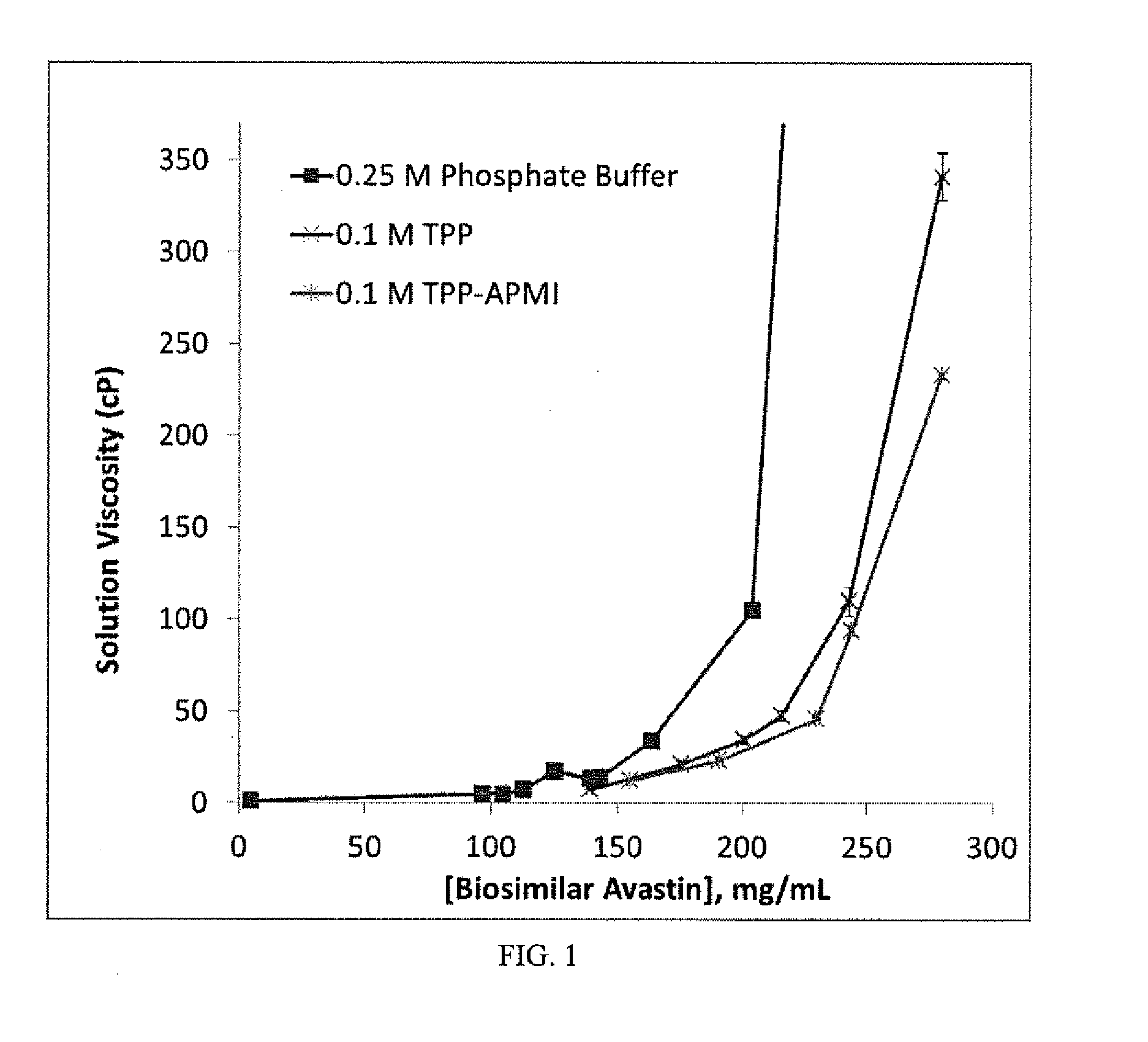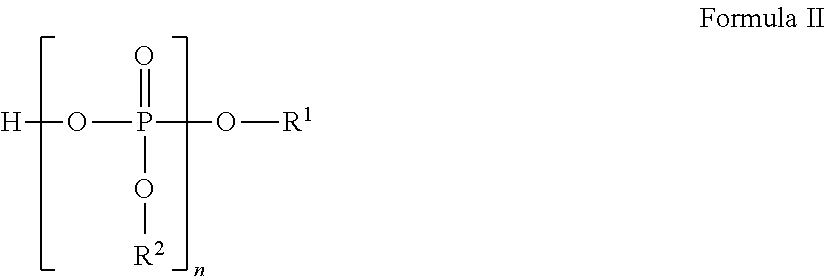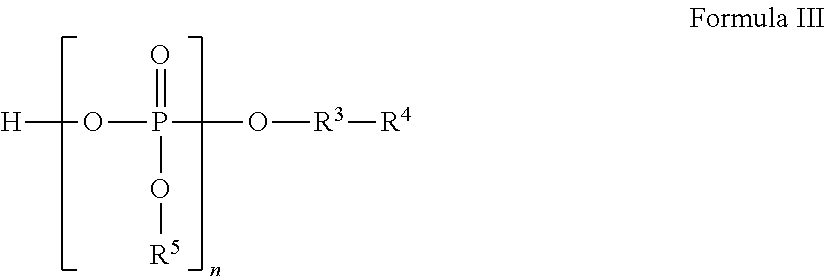Liquid protein formulations containing organophosphates
a liquid protein and organophosphate technology, applied in the field of injectable protein pharmaceutical formulations, can solve the problems of difficult to achieve manufacturing, storage, and difficulty in achieving chemical and/or physical stability, and achieve the effects of facilitating and/or accelerating the reconstitution of the lyophilized, reducing the viscosity of the protein solution, and facilitating processing
- Summary
- Abstract
- Description
- Claims
- Application Information
AI Technical Summary
Benefits of technology
Problems solved by technology
Method used
Image
Examples
example 1
Organophosphates Lower the Viscosity of Concentrated Aqueous Solutions of Biosimilar AVASTIN®
[0265]A commercially-obtained biosimilar AVASTIN® (100-400 mg) containing pharmaceutical excipients (Polysorbate 20, phosphate and citrate buffers, mannitol, and NaCl) was purified. First, Polysorbate 20 was removed using DETERGENT-OUT® TWEEN Medi Columns (G-Biosciences). Next, the resulting solutions were extensively buffer-exchanged into 20 mM sodium phosphate buffer (PB; pH 7.0) for PB samples and 2 mM PB (pH 7.0) for viscosity-reducing organophosphate samples and concentrated to a final volume of less than 10 mL on Jumbosep centrifugal concentrators (Pall Corp.). Samples buffer exchanged into 2 mM PB were first aliquoted. Then, an appropriate amount of viscosity-reducing organophosphate solution (pH 7.0) was added to each aliquot such that upon reconstitution with water, the final excipient concentration was 0.10-0.25 M. The protein solutions were then freeze-dried. The dried protein cak...
example 2
Viscosity Reduction of Aqueous Solutions of Biosimilar AVASTIN® is Dependent Upon Organophosphate Concentration
[0267]Aqueous solutions of a commercially-obtained biosimilar AVASTIN® were prepared as described in Example 1. The dried protein cakes were reconstituted in phosphate buffer or water to a final volume of about 0.1 mL and a final viscosity-reducing organophosphate concentration of 0.02 M-0.5 M. The final concentration of mAb in solution was determined by a Coomassie protein quantification assay by comparing unknown concentrations of samples to a standard curve of biosimilar AVASTIN®. Viscosities reported were measured on a RheoSense mVROC microfluidic viscometer.
[0268]The data in Table 2 demonstrate that the viscosity of aqueous solutions of biosimilar AVASTIN® is initially reduced by the addition of viscosity-reducing organophosphates. However, as the viscosity-reducing organophosphate concentration increases beyond a certain value, the addition of more viscosity-reducing ...
example 3
Organophosphates Lower the Viscosity of Many Therapeutically Relevant Monoclonal Antibodies
[0269]Aqueous solutions of a commercially-obtained biosimilar AVASTIN® were prepared as described in Example 1. The dried protein cakes were reconstituted in phosphate buffer or water to a final volume of about 0.10 mL and a final viscosity-reducing organophosphate concentration of 0.02 M-0.50 M. The final concentration of mAb in solution was determined by a Coomassie protein quantification assay by comparing unknown concentrations of samples to a standard curve of biosimilar AVASTIN®.
[0270]Commercially-obtained TYSABRI® containing pharmaceutical excipients (sodium phosphate buffer, NaCl, Polysorbate 80) was purified, buffer exchanged, concentrated, dried, reconstituted, and analyzed in the same manner. Commercially-obtained biosimilar ERBITUX® containing pharmaceutical excipients (sodium phosphate buffer, NaCl, Polysorbate 80) was purified, buffer exchanged, concentrated, dried, reconstituted...
PUM
| Property | Measurement | Unit |
|---|---|---|
| absolute viscosity | aaaaa | aaaaa |
| molecular weight | aaaaa | aaaaa |
| molecular weight | aaaaa | aaaaa |
Abstract
Description
Claims
Application Information
 Login to View More
Login to View More - R&D
- Intellectual Property
- Life Sciences
- Materials
- Tech Scout
- Unparalleled Data Quality
- Higher Quality Content
- 60% Fewer Hallucinations
Browse by: Latest US Patents, China's latest patents, Technical Efficacy Thesaurus, Application Domain, Technology Topic, Popular Technical Reports.
© 2025 PatSnap. All rights reserved.Legal|Privacy policy|Modern Slavery Act Transparency Statement|Sitemap|About US| Contact US: help@patsnap.com



